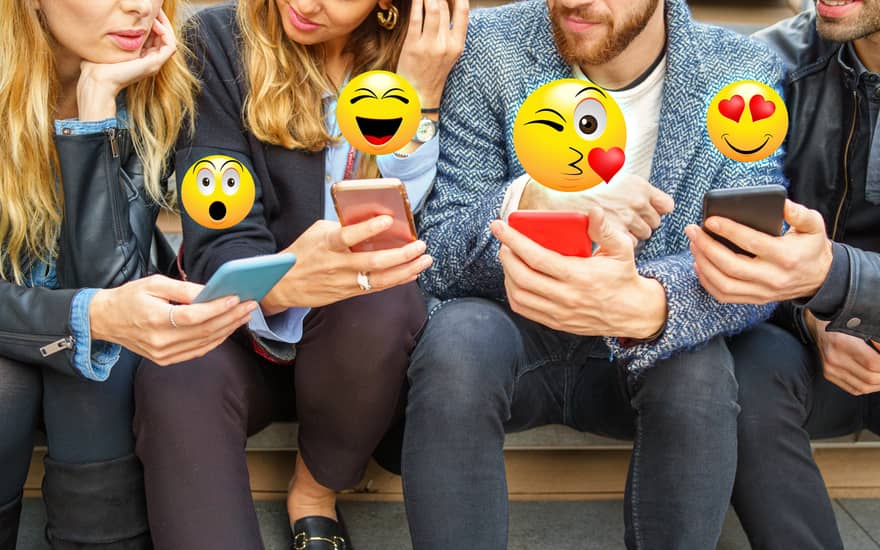Emojis at work: do’s and don’ts
Published on 19/02/2020 in Inspire
Emojis are gradually conquering the business world. Skype, WhatsApp, Slack: messages with emojis are part and parcel. A thumbs up or a grinning smiley quickly breaks the ice. But when is it best to use emojis?

Do you speak emoji?
Do you need an urgent answer from your boss? Or approval from a client? Then you may sometimes send a text or a WhatsApp message to get a quick answer. Do you receive a thumbs up or a grinning smiley in reply? Then you know it is okay. Emojis make a message stronger, they are efficient and therefore good for productivity.
Looking for a professional app to ensure smooth, efficient communication between your staff or with your clients? Choose among our collaborative apps.
Choose a collaborative appSending emojis = familiar style
But when do you use an emoji, and when do you not? There is no clear answer, because the use of emojis is still in its infancy. We are yet unsure how to use them properly. We really just do what we think is best.
So, the most important guideline is to use them in moderation. But you should know for yourself when you should or should not make use of them. It is like using informal writing. The tone and context of your message are very important, as is knowing who you are sending it to. For a Chinese colleague, for instance, a waving hand does not mean hello. You are actually telling them that you do not want to have anything to do with them.
And what about communication with your clients? Make sure it fits in with what they expect from you. If emojis work, they narrow the gap with your company. You come across as more personal and less anonymous. If not, the gap gets bigger and they harm your professionalism.
The tone and context of your message are very important, as is knowing who you are sending it to.
Heading for an emoji policy?
Emojis are the new e-mail. Like with e-mail, there were no rules at first. Only after we started to annoy each other with the constant ‘Reply to All’ and the e-mails with the team leaders or the boss in cc did we introduce guidelines. Today, virtually every company has an e-mail policy. Now that we send our short messages via Skype – soon called Microsoft Teams – Slack and WhatsApp, communication experts predict that etiquette will develop here, too.
For example, it is best not to send emojis to someone you have not yet met or whose communication style you do not know. Or the recipient might have an old smartphone. In that case, he will see question marks instead of emojis. And do not use emojis that are unclear, such as the frowning little chap with his tongue sticking out and little stars in his eyes.
Do you want your staff to communicate and collaborate better? Discover our solutions for digital workplaces.
Better communication and collaborationGeneration gap
Do emojis create a generation gap? Yes, they do. The younger generations have grown up with them and experiment as much as they can. The over-fifties use them less and sometimes have trouble understanding exactly what they mean. A wink, a fist and a smile are clear. But take the smiley that is crying with laughter: older people often think that it is a sad symbol.
And the higher up the corporate ladder you go, the fewer emojis you see. At most a simple thumbs up. But the use of emojis declines with age, too. The older people get, the more selective they become about sending emojis. Those who carry on using emojis risk coming across as immature.
Experts
Our experts keep you informed on the latest news and trends for ICT professionals.